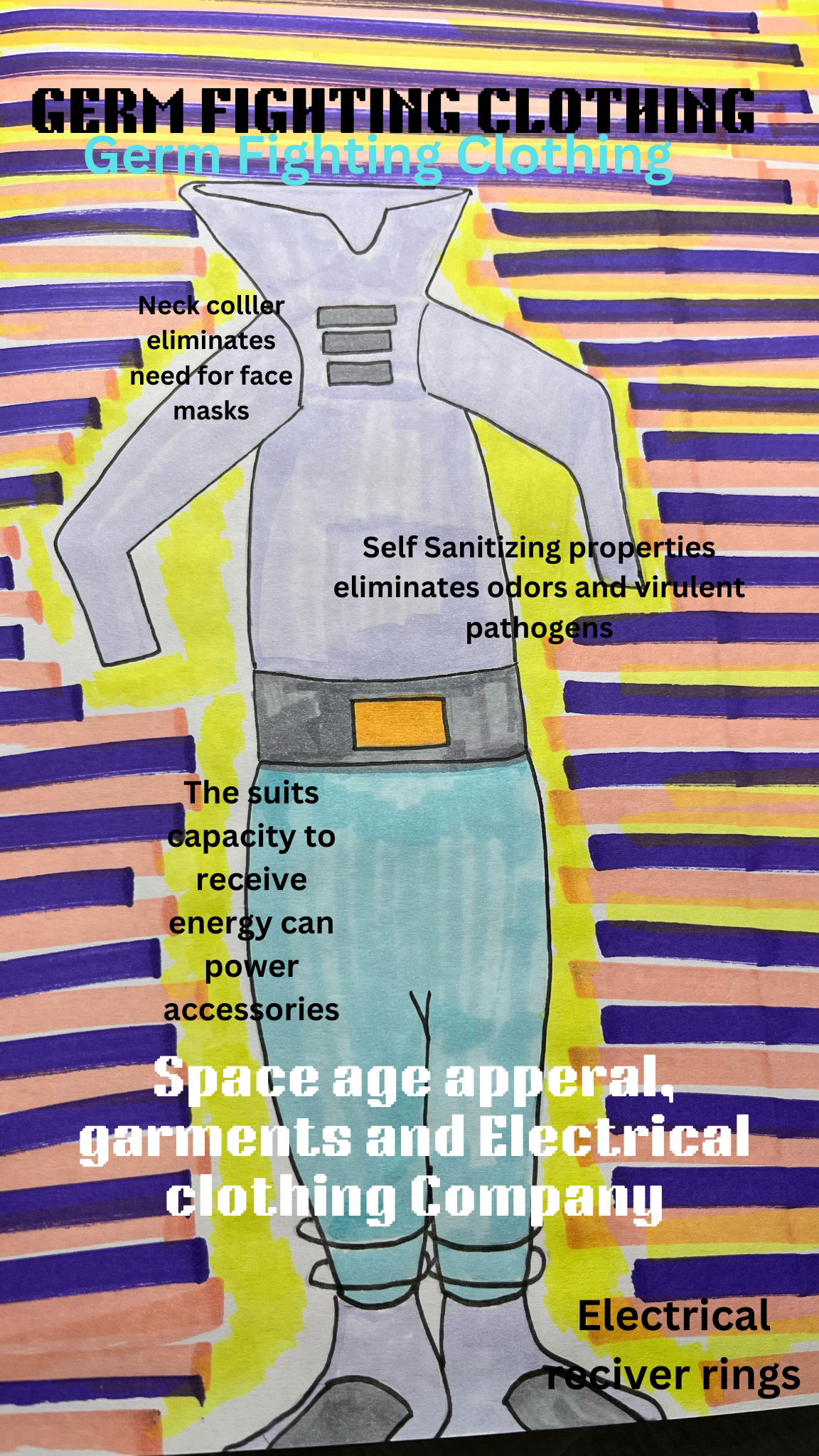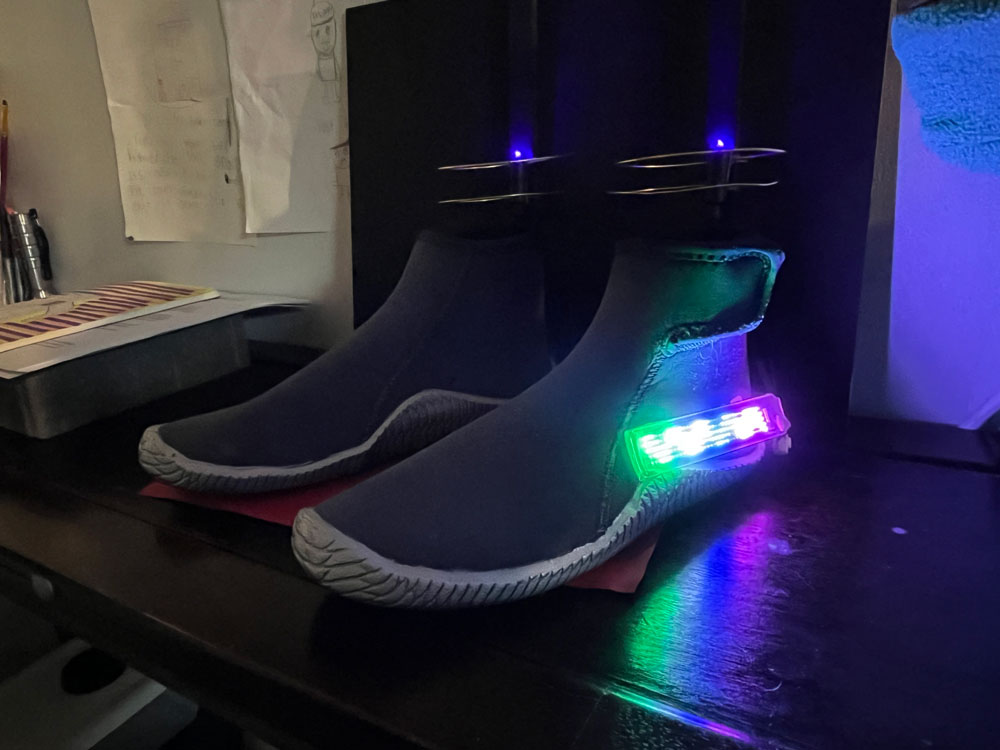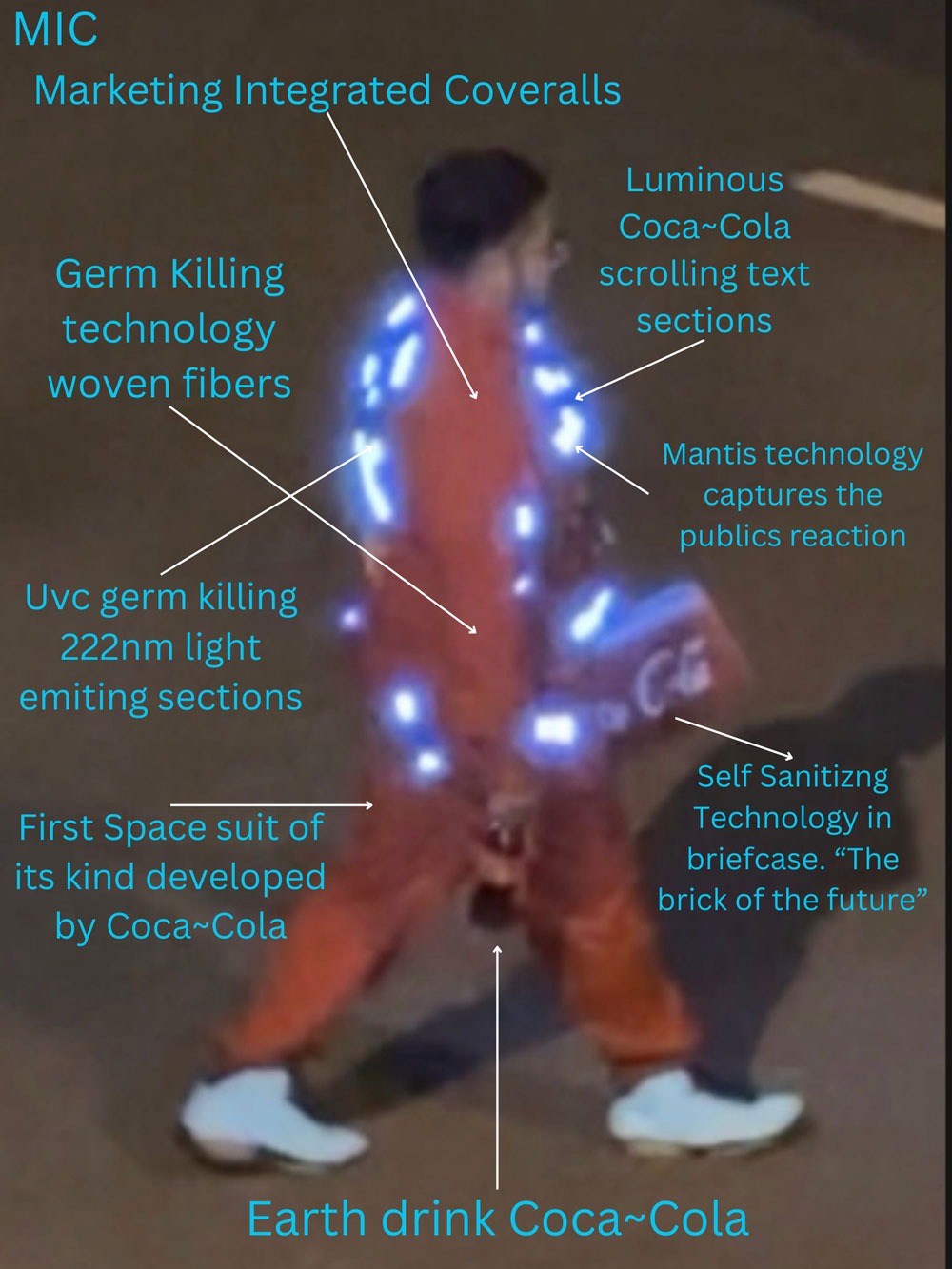The Jetsons Theory: Part 2 – The Future of Clothing
One cannot talk about any Jetson theories without reflecting on history. Sixty-two years later, many futuristic concepts they animated have come true. We viewers saw flat-screen televisions, smartphones, robotic vacuums, and even humanoid robots. That’s a pretty impressive prediction for a cartoon. Everything about The Jetsons was a depiction of things “soon to come.” How did an innocent children’s show capture our collective hopes and imagination in such an amazingly predictive way? We are slowly catching up to what The Jetsons predicted.
In 1990, The Jetsons movie was released in theaters nationwide. About ten minutes into the film, a scene begins in which Rosie, their housekeeping robot, notices smog outside the Jetsons’ window. With the push of a button, she raises the already sky-high apartment even higher to escape the hovering polluted air. Precise and innovative solutions to everyday life are addressed in the show. Improvements in antiquated technology held our attention: subtle clues are given. If you’re observant (as I tend to be), you might ask what everything about their world was based on. Was it all about the prevention of germ contagion? Is it possible that this casual cartoon has solved many more problems than we’d ever think to credit it for?
Remember, we are describing the symbolism of The Jetsons and the advancement of a space-age future. Exactly how did the Jetsons get to the point where they live in a world with so many advanced technologies at the ready? Longing and lingering human problems such as germs, viruses, and dangerous bacteria will expedite inevitable solutions that can tackle even pandemics. It will undoubtedly be an extremely virulent germ if we ever find life on other planets.
A Brief History on Textiles, Fabrics, and Merging Societies
The Smallpox Blanket Controversy of 1837-38. was an epidemic that hit Native Americans quite hard. Death totals range from a conservative 17,200, based on interviews with the most ravaged tribes of the Plains, to an astonishing 150,000. “Smallpox in the blankets” is a controversial theory that cannot be dismissed as false. It is founded on limited historical facts and widespread circumstantial evidence. Smallpox is a highly contagious disease caused by the variola virus in the Orthopoxvirus family. Smallpox is considered one of the deadliest viruses in human history. The onset of fevers and a characteristic rash appear, beginning in the mouth and expanding to cover the whole body. Eventually, the bumps scab over and fall off, leaving visible scarring. The unique and easily recognizable rash caused by smallpox makes it easy to identify. Whenever two societies merge, the risk is high that one will carry a germ or virus that the other is unprepared for.



The Native American people didn’t have a written language to keep records. Much of the information about the controversial intentional spreading of diseases by giving infected blankets to the Natives is a one-sided account of history blaming Europeans for the disaster. The oral traditions of Native Americans speak of white settlers bringing diseases with them after those Natives received infected gifts such as boxes and blankets from the Franco-Swiss mercenaries acting with English approval. This lesson of the danger of foreign germs was learned with a terrible loss of life. This occurred almost 200 years ago; surely we understand now that astronauts traveling to other worlds will encounter such dangers. Like the Native Americans, the astronauts headed to Mars will clash with their new environment.
The Clever Plague Doctors
European plague doctors of 1400-1700 wore special clothing that provided them layers of safety. Their distinctive look caused people to call them walking “bird men.” Interestingly, the outfit, designed by French physician Charles de Lorme, was compiled with ingenuity. First, the doctors donned thick leather high boots, gloves, and cloaks coated in beeswax for the highest protection from fleas and rats biting.
Yersinia pestis, carried by rats and other animals, is the bacteria that causes plague.. Humans usually get infected by being bitten by fleas or lice carrying the bacteria. Thick leather protected them from flea biting; check that off the list. The emergency created a demand for doctors’ in-home visits. Towns piled their dead in the middle of the street to be collected by the disposal teams who would burn or bury the bodies. This was the best-case scenario plague doctors encountered: if an area became devastated, bodies piled up. Wading through the corpses in tight quarters required advanced personal protection. The entire outfit is intended to prevent illness from spreading to the physician.

Elements like the hat served to identify them as medical doctors. The long overcoat and bird mask tucked into the collar exemplify how the outfit is designed to minimize skin exposure to the open air. The beeswax coating adds a layer of defense: Honey and its by-product beeswax contains Squalene and Propolis, natural “germ-killing” elements. The fleas carry virulent bacteria, which beeswax repels. One of the tools the plague doctors carried was a cane. Minimal contact with the infected was in force. The cane could interact with the body, lifting the infecteds’ arms and legs and indicating areas for treatment to family members who had already been exposed. The cane the plague doctors used was necessary to minimize the risks to the invaluable physicians.
The beak in the plague doctors’ bird-like mask contained a blend of potent herbs. This housing, strategically placed in front of the nose and mouth, contained specific herbs and flowers, such as lavender, which provided its fragrance to cover the smell of rotting bodies. This respirator contained well-known “germ-fighting” spices as well. Cloves have an oil called eugenol, which gives the spice natural antibacterial properties. Intelligently picked respirator ingredients not only gave perfumed air, but it’s worth noting the antibacterial properties of the clove were enough to disrupt cell membranes in harmful bacteria; in other words, cloves’ very existence is made for an “offensive strike” against germs, not just a “nice smell.” Mint leaves were also placed in the blend. Like clove, the mint plant is more than just a refreshing-smelling herb. Its aroma is its offense. At the microscopic level, mint turns the air around it into crystals called menthol. The concentrated, refreshing mint air gives the plague doctors a cool feeling. Is it a coincidence that mint, clove, and honey and their byproducts are lethal to the cell membranes of harmful bacteria?
Fabrics of the Future
Clothing and fabrics can play a vital role in personal protective wear. In any society, prevention has always been the key to permanent solutions. If diseases have the potential to live on blankets, then the obvious solution is to implement innovation into our basic sleep setup. But why stop there? Since the smallpox outbreaks and creative plague doctors, fabric advancements have come a long way. Modern clothing needs an absolute update to keep up with today’s outbreaks of virulent diseases. The evolution of fabrics has already arrived without much attention being received. 2020 proved to be a game changer for all businesses and entrepreneurship levels. Shouldn’t our clothing provide us not just defense but a level of “offense,” during which the microscopic germs that land on us are destroyed by self-sanitizing means? Where are the post-pandemic permanent solutions to prevent this from ever happening again? The following are real fabrics that exist right now (2024).
- Electroceutical fabric: This Fabric is made with a pattern of microcell batteries that create an electric field when moist. It can kill coronaviruses and other pathogens on contact. Currently used as a wound-care dressing for its highly antibacterial (germ-fighting) properties.
- Pieclex Fabric: This fabric uses electricity to fight germs and other particles, such as pollen. It can eliminate the need for chemical agents.
- Nanowire Fabric: This fabric is made with nanowires loaded with silver-TCNQ, an antibacterial material. It can kill infectious bacteria such as E. coli within 10 minutes.
- Piezoelectricity: Fabrics can also generate electricity through stretching or bending the piezo elements in the fabric, generating an electrical charge.
- The Copper Halo effect is an antimicrobial property of copper that reduces contamination on surfaces near those treated with copper. Copper steals electrons from bacteria when they contact it.
No More Help is Coming?
The 2020 Covid pandemic caused the largest shutdown ever known to the world. Five years later, we returned to normal, as if nothing had happened. Why? It has been my life’s work, along with my 20-year fireman experience, to bring this to the attention of those entrepreneurs who want to present innovation in the fast-food world or any high-traffic area that sees tremendous human numbers, especially public schooling. There used to be a government mechanism of review, after a certain number of public injuries or deaths resulting from a process occurs. If a preventable problem was identified, the problem was addressed with life safety codes. That “mechanism” has unfortunately ceased. Our government has halted its interventions.
In 1974, after multiple devastating fires broke out across the country, a policy review was done, and a commission was formed. Answers were needed as to why the most advanced country in the world had such a high loss of life from fires.
The simple answer then was the lack of standards and inadequate regulations. These examples caused the deaths of many Americans, which led to the creation of the NFPA (National Fire Protection Agency) and inventions such as smoke detectors and emergency exits, which open outwards instead of inward. The 1974 Fire Prevention Act commission’s data at the time was a relatively small number of deaths, spurring unanimous acts of safety. Comparing this to the 2020 COVID casualty numbers makes me wonder why the government hasn’t already stepped in and announced a commission to look at the post-COVID solutions.
I propose to the American people we model the Fire Prevention Act of 1974 and adopt an updated germ prevention and detection system. Both passive and active measures will be needed. A one-for-one cloning of our fire systems will be needed. Make no mistake, pandemics such as COVID-19 are loose ends that need to be addressed head-on with technology such as the “germ detector” (which I am developing). No longer should the news tell us when a new germ is discovered. Shouldn’t our buildings alert us and protect us from such environments? Viruses, germs, and virulent bacteria can be airborne. Eventually, gravity pulls them down to land on surfaces, including clothing.
The Jetsons Wore the Future
The Jetsons’ futuristic clothing likely has a different look and design inspired by the idea of global pandemics that future humans have endured. The Jetsons’ unique outfits fit perfectly with how safety dictates design. In the Jetsons’ case, triangular neck collars point towards their respiratory systems, which eliminates the need for masks.
In my opinion, this is an example of advanced clothing which destroys germs. The areas immediately around the mouth, nose, and ears are the primary bodily entrances of microscopic organisms. Like a satellite dish, these neck collars focus their electroceutical properties on these openings. “Orbital rings” and small, round, protrusion-like antennas can be seen attached to the Jetsons’ clothing – which could serve receivers that power their clothing. Such devices are no coincidence; wireless energy transfer exists today in examples such as placing a smartphone on a charging surface. The cell phone receives power to charge wirelessly. Why haven’t we further developed this technology and updated and eliminated overhead physical powerlines? Was Nikola Tesla the last genius ever to live?

Not only do the collars serve a purpose, but entire articles of clothes are comprised of the very self-sanitizing fabrics I mentioned. Metals such as copper, silver and zinc are inherently “germ fighting.” At the microscopic level, the ions exchanged between these metals and virulent bacteria and viruses is detrimental to unwelcomed pathogens. Making wearable fibers out of copper, zinc, and silver provides an offensive arsenal of sorts. The future of textiles and intelligent fabrics were presented to us long ago in that little cartoon called The Jetsons.
With our immune systems being the only line of defense in an invisible battle which happens daily, it only makes sense that the very clothing we wear should not only serve the purpose of looking nice and staying warm, but fighting off and repelling dangerous pathogens from the environment we’re in. The blended wearable fibers made of silver and copper oddly enough are the same exact materials of a battery. Could we power our accessories with the clothing I’m describing? Imagine a line of Tesla Clothing that could recharge your smartphone and Fitbit throughout the day.
With 2025 now upon us, we see clips of the state-of-the-art rocket ships from SpaceX intelligently landing back on Earth. The recoverable rockets Elon Musk wields demonstrate the future of space technology. Undoubtedly, we will discover life on other planets with 100 percent certainty it will be a virulent germ. It makes me wonder if SpaceX and Nasa witnessed the people of Earth get crushed by a virus, but they didn’t help us. How will today’s astronauts fare in space if they can’t survive on Earth? Do they even use the fabrics I proposed or self-sanitizing building designs? But the bigger question is: if they aren’t concerned about germs, is space even a real prospect?




